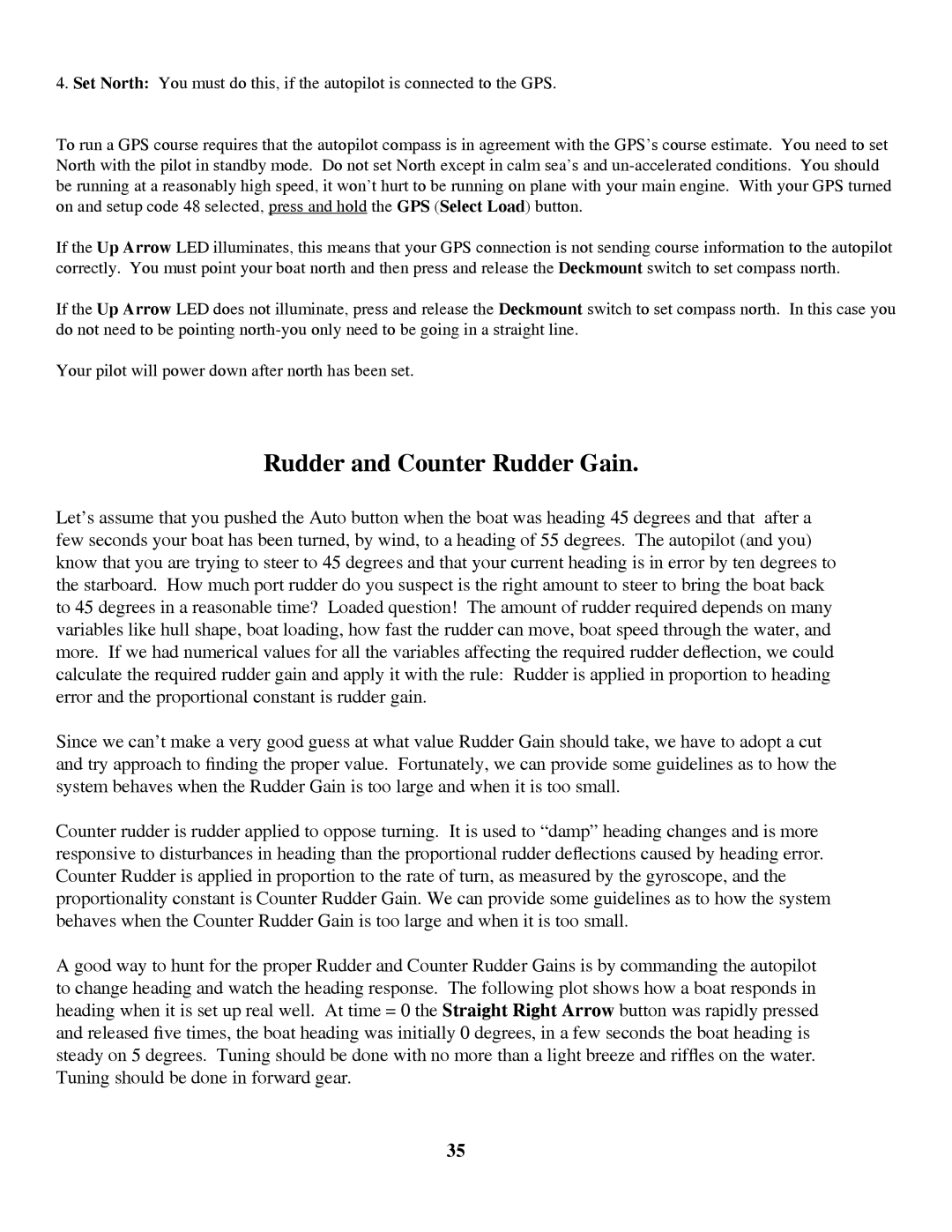4. Set North: You must do this, if the autopilot is connected to the GPS.
To run a GPS course requires that the autopilot compass is in agreement with the GPS’s course estimate. You need to set North with the pilot in standby mode. Do not set North except in calm sea’s and
If the Up Arrow LED illuminates, this means that your GPS connection is not sending course information to the autopilot correctly. You must point your boat north and then press and release the Deckmount switch to set compass north.
If the Up Arrow LED does not illuminate, press and release the Deckmount switch to set compass north. In this case you do not need to be pointing
Your pilot will power down after north has been set.
Rudder and Counter Rudder Gain.
Let’s assume that you pushed the Auto button when the boat was heading 45 degrees and that after a few seconds your boat has been turned, by wind, to a heading of 55 degrees. The autopilot (and you) know that you are trying to steer to 45 degrees and that your current heading is in error by ten degrees to the starboard. How much port rudder do you suspect is the right amount to steer to bring the boat back to 45 degrees in a reasonable time? Loaded question! The amount of rudder required depends on many variables like hull shape, boat loading, how fast the rudder can move, boat speed through the water, and more. If we had numerical values for all the variables affecting the required rudder deflection, we could calculate the required rudder gain and apply it with the rule: Rudder is applied in proportion to heading error and the proportional constant is rudder gain.
Since we can’t make a very good guess at what value Rudder Gain should take, we have to adopt a cut and try approach to finding the proper value. Fortunately, we can provide some guidelines as to how the system behaves when the Rudder Gain is too large and when it is too small.
Counter rudder is rudder applied to oppose turning. It is used to “damp” heading changes and is more responsive to disturbances in heading than the proportional rudder deflections caused by heading error. Counter Rudder is applied in proportion to the rate of turn, as measured by the gyroscope, and the proportionality constant is Counter Rudder Gain. We can provide some guidelines as to how the system behaves when the Counter Rudder Gain is too large and when it is too small.
A good way to hunt for the proper Rudder and Counter Rudder Gains is by commanding the autopilot to change heading and watch the heading response. The following plot shows how a boat responds in heading when it is set up real well. At time = 0 the Straight Right Arrow button was rapidly pressed and released five times, the boat heading was initially 0 degrees, in a few seconds the boat heading is steady on 5 degrees. Tuning should be done with no more than a light breeze and riffles on the water. Tuning should be done in forward gear.
35
